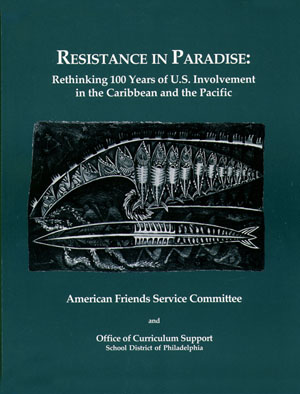 Over one hundred years ago, in 1898, the United States became the ruling power in Pacific and Caribbean islands including Cuba, Guam, Hawaii, Puerto Rico, the Philippines, and American Samoa. U.S. involvement altered the course of history of these countries, significantly affecting their cultures, political systems, and social structures.
Over one hundred years ago, in 1898, the United States became the ruling power in Pacific and Caribbean islands including Cuba, Guam, Hawaii, Puerto Rico, the Philippines, and American Samoa. U.S. involvement altered the course of history of these countries, significantly affecting their cultures, political systems, and social structures.
Resistance in Paradise was written by a collaborative team of educators and activists that included people from each of the featured countries and territories. It is designed as a resource for high school and college classrooms, community groups, faith communities, and others who are interested in exploring the U.S. involvement beyond the borders of North America. Each chapter provides a historical overview, selected readings from original source materials, and teaching ideas.
This volume is filled with illustrations, cartoons, photographs, poems, stories, and historical and contemporary documents. All readings are formatted for easy reproduction for classroom or group use.
Unlike standard textbooks, Resistance in Paradise provides insight into the perspectives of people whose lives and homelands have been directly affected by the Spanish-American War. As a Filipina American, I greatly appreciate this feature of the book because so often textbook writing on the war excludes the voices of people of color. In addition to including multiple perspectives, Resistance in Paradise provides tools such as primary sources, role play activities, and reflective writing exercises, regarding themes such as international relations and human rights, to make the causes and consequences of the war relevant to students. It is an excellent resource that can help students sharpen their critical thinking skills and gain a more balanced understanding of history. — Darlene Germino, humanities for teaching student, Seattle University
The book is out of print, however a PDF of the book is available for free online at ERIC.
ISBN: 9780910082334
Published by the American Friends Service Committee and the School District of Philadelphia
Out of print.
Excerpt
The U.S. Takes Over Puerto Rico
Puerto Rico maintained its status as a colony of Spain until the end of the nineteenth century, during which time Spain lost most of its other colonies in Central and South America to domestic revolutions. American business interests were eager to expand into the Caribbean to profit from fertile land and new markets. They looked for a way to edge Spain out of the region. Spain’s control over Puerto Rico came to an abrupt end with the 1898 invasion of U.S. troops. U.S. Marines invaded Spain’s remaining overseas colonies of Cuba, Puerto Rico and the Philippines. During the Spanish-American War U.S. troops invaded Puerto Rico at Guanica on July 25, 1898. There were no Puerto Rican casualties, however, 50 Spanish and U.S. troops died in that battle. The war ended before any heavy fighting began in Puerto Rico. At the end of war, the U.S. demanded Puerto Rico as ‘war payment’ from Spain in the Treaty of Paris on December 10, 1898 along with the Philippines and Cuba.
In 1900, the island changed from military to civilian authority with implementation of the Foraker Organic Act, which established the island as a U.S. unincorporated territory. Later that year, President McKinley appointed George Allen as Puerto Rico’s first Governor. In 1917, the U.S. Congress passed the Jones Act, which was signed by President Woodrow Wilson. This Act extended U.S. citizenship to Puerto Ricans for the first time. It also established a locally elected Senate and House of Representatives, reflective of the organization of the US Congress in Washington. In 1948 the U.S. Congress gave Puerto Rico the authority to elect its own governor. Puerto Rico developed its own constitution as a Commonwealth under the leadership of its first elected governor, Luis Munoz Marin. Under Commonwealth status, Puerto Ricans did not pay federal income tax or vote in presidential elections, although they paid social security, received federal welfare and served in the armed forces. The U.S. Congress controlled Puerto Rico’s laws, courts, currency, customs, immigration, defense, foreign relations and trade. English was imposed as the language of instruction in Puerto Rican schools, although neither the students nor most teachers could speak it.
U.S. corporations moved into Puerto Rico, acquiring vast tracts of land to set up sugar and tobacco plantations. In the process many Puerto Rican farmers lost their land and became poorly paid laborers on the plantations, while others moved to Hawaii or Cuba to cut sugar cane. For many Puerto Ricans immigrating to the mainland U.S. seemed to be the best solution in their search for better jobs and new options for sustaining their families.

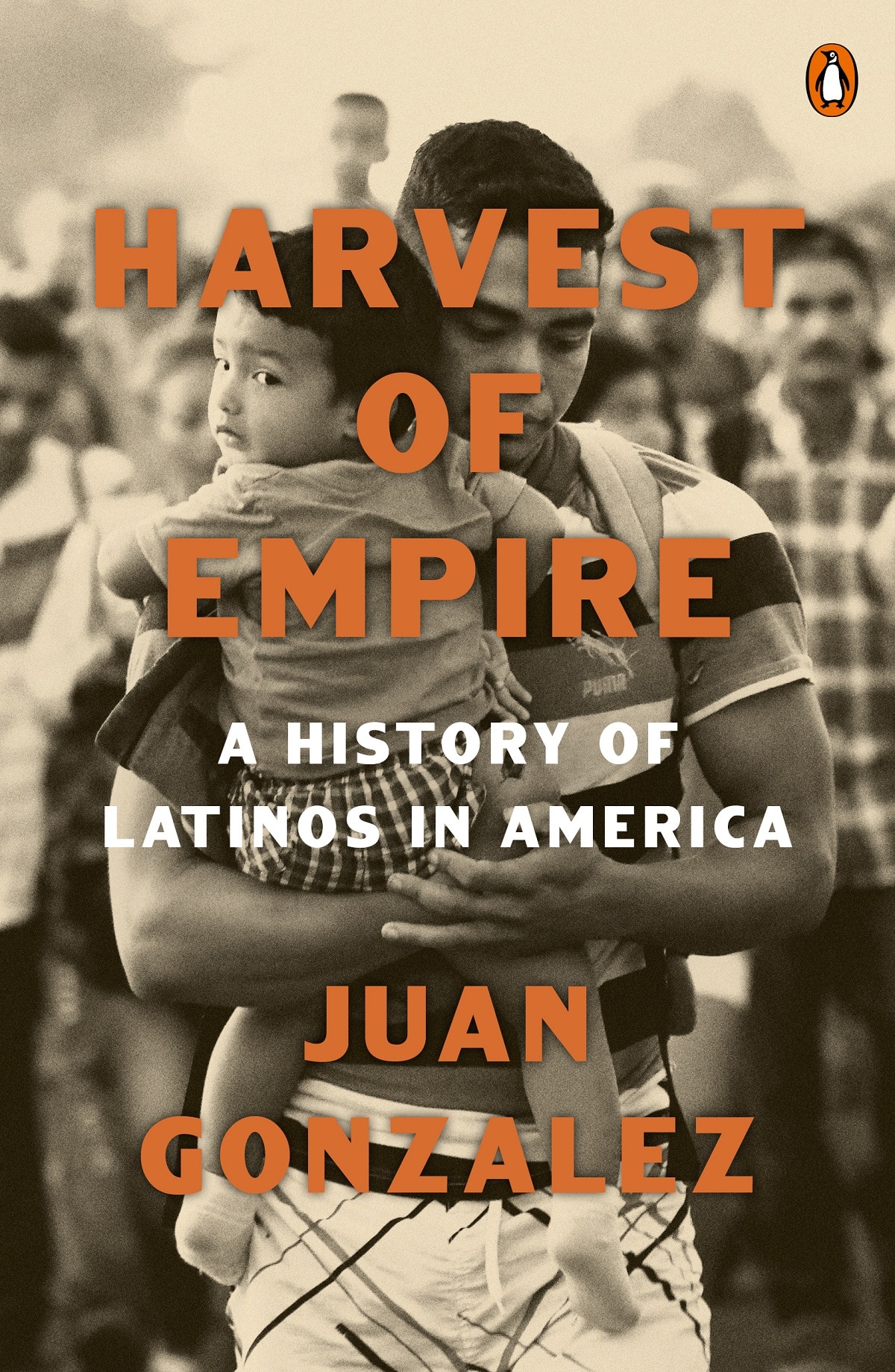
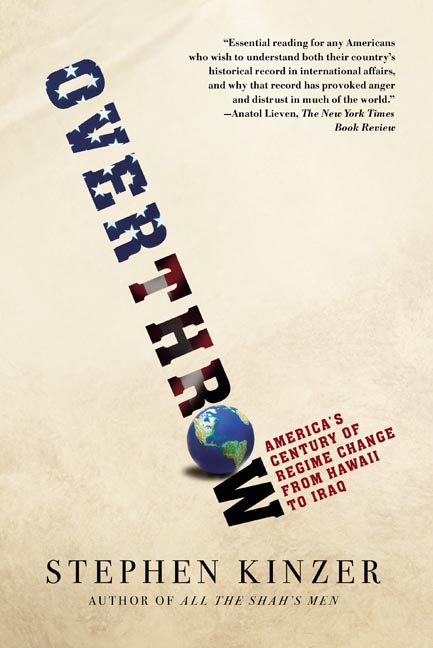
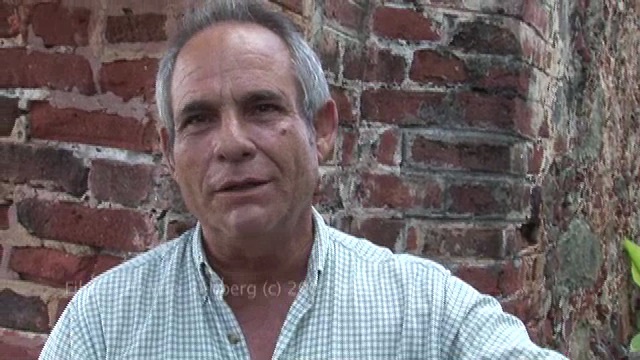
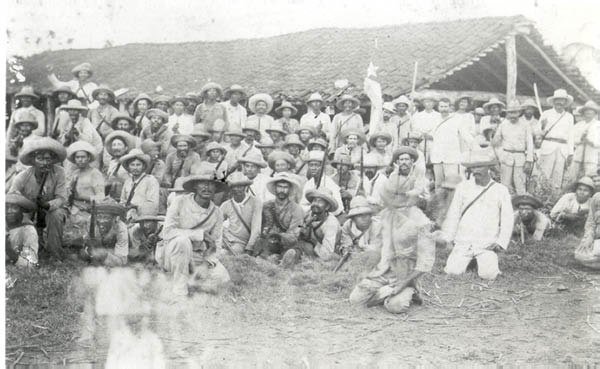






Twitter
Google plus
LinkedIn